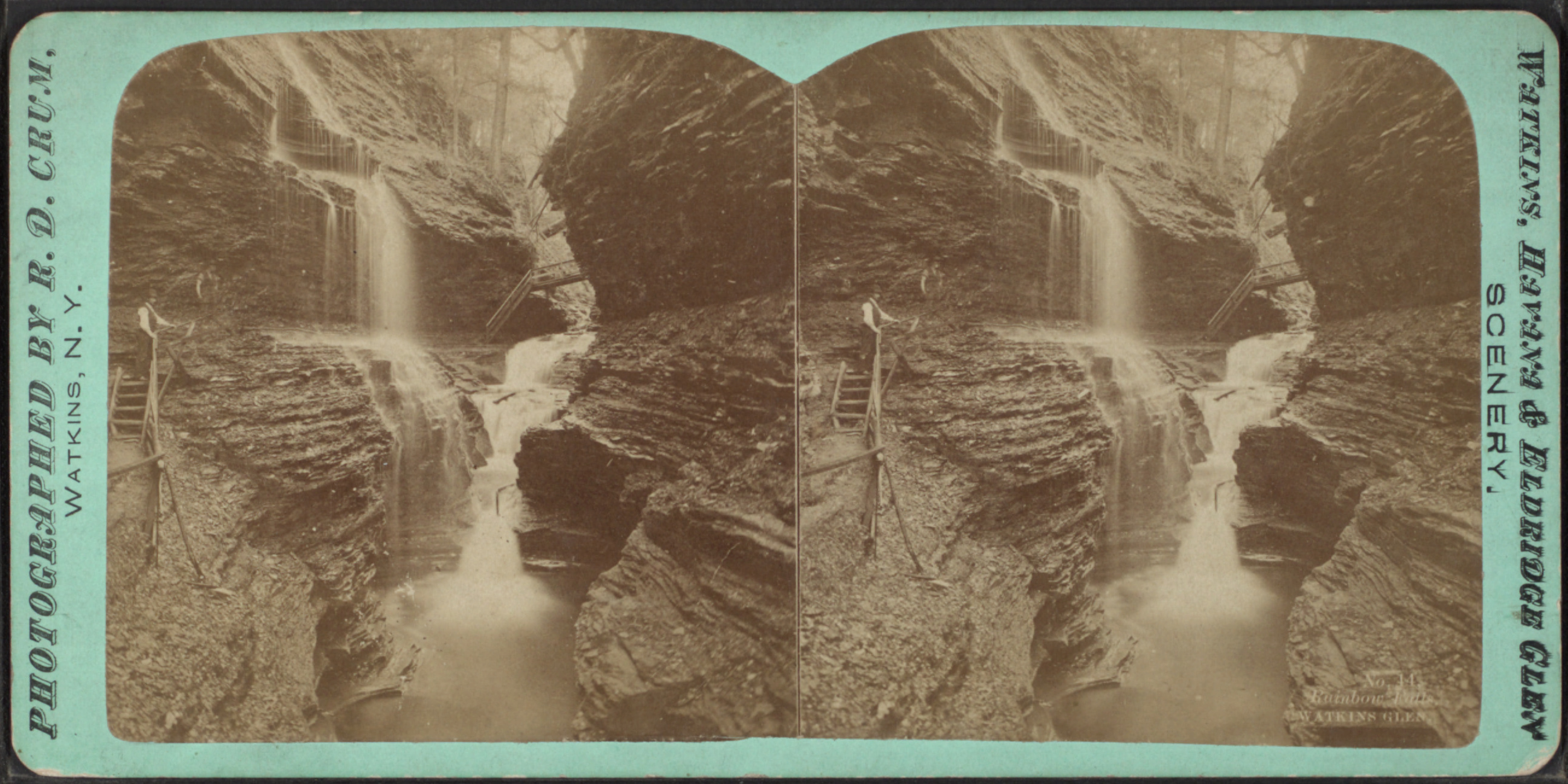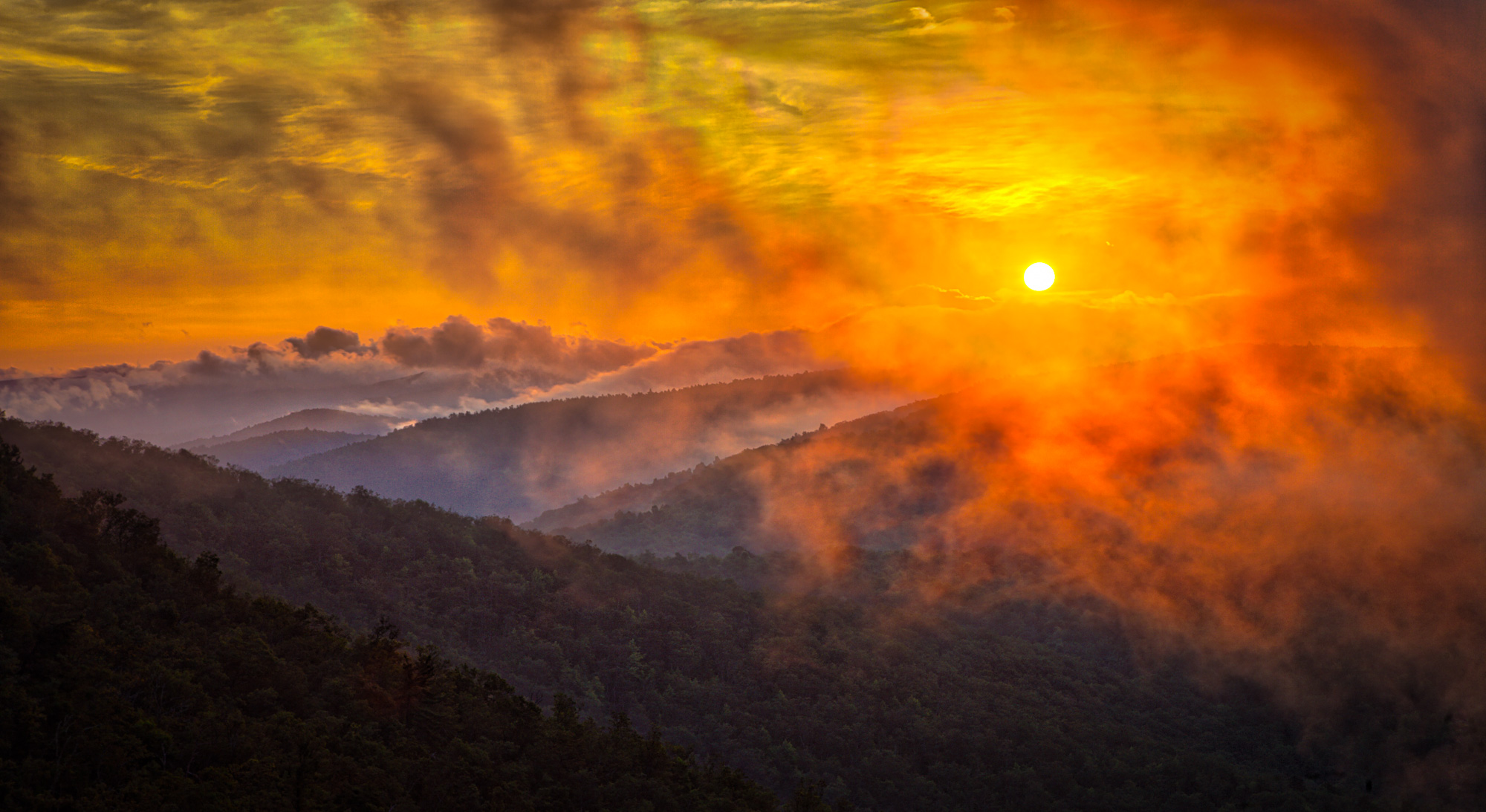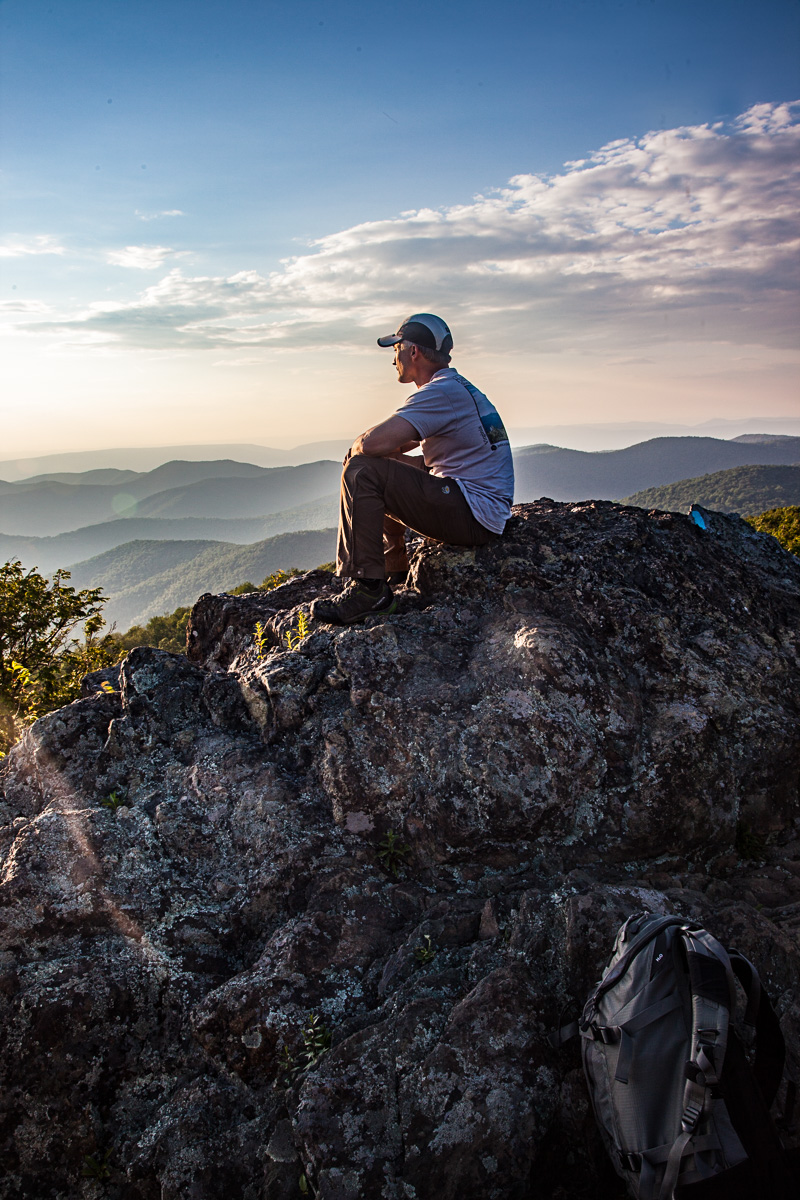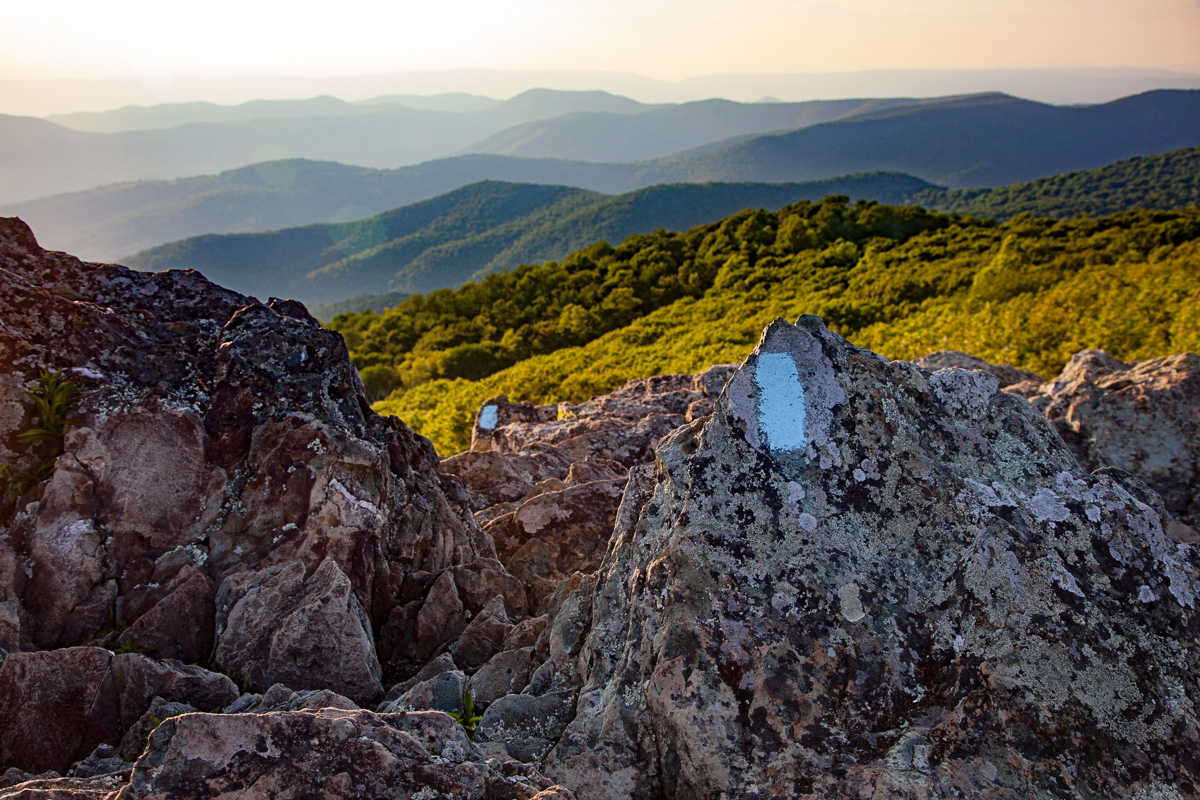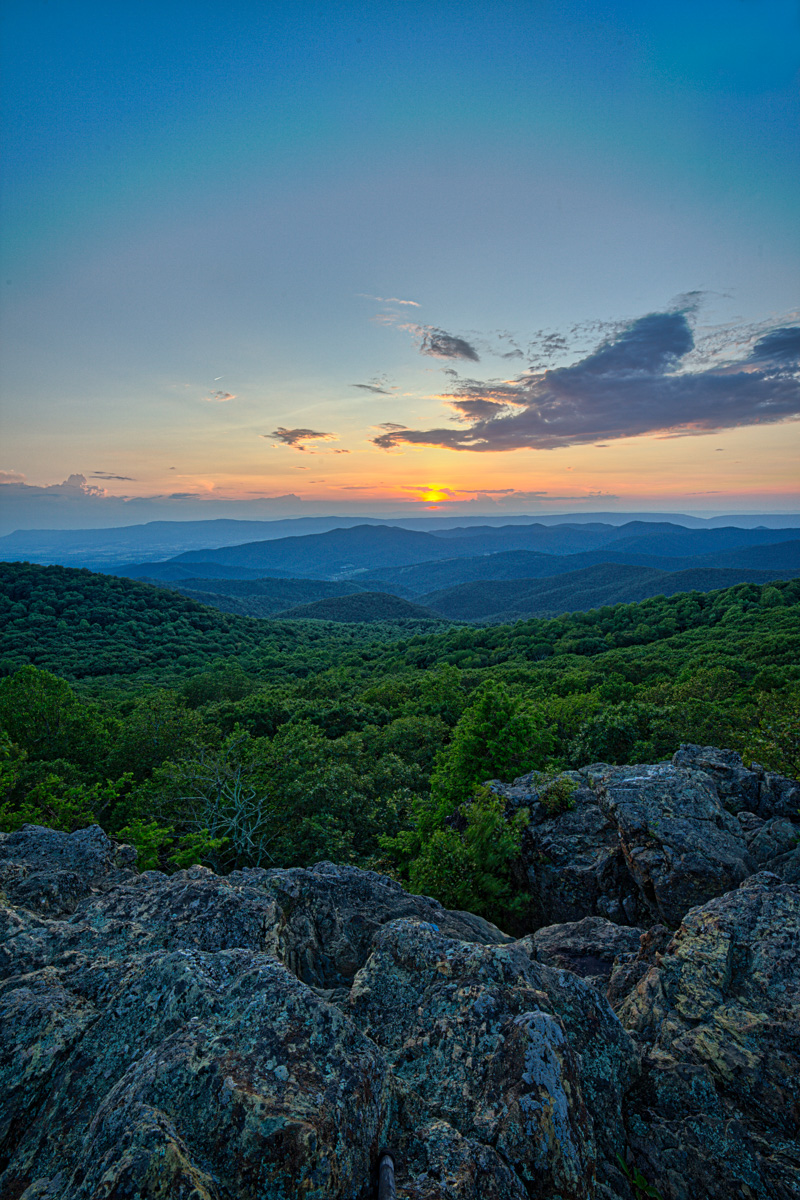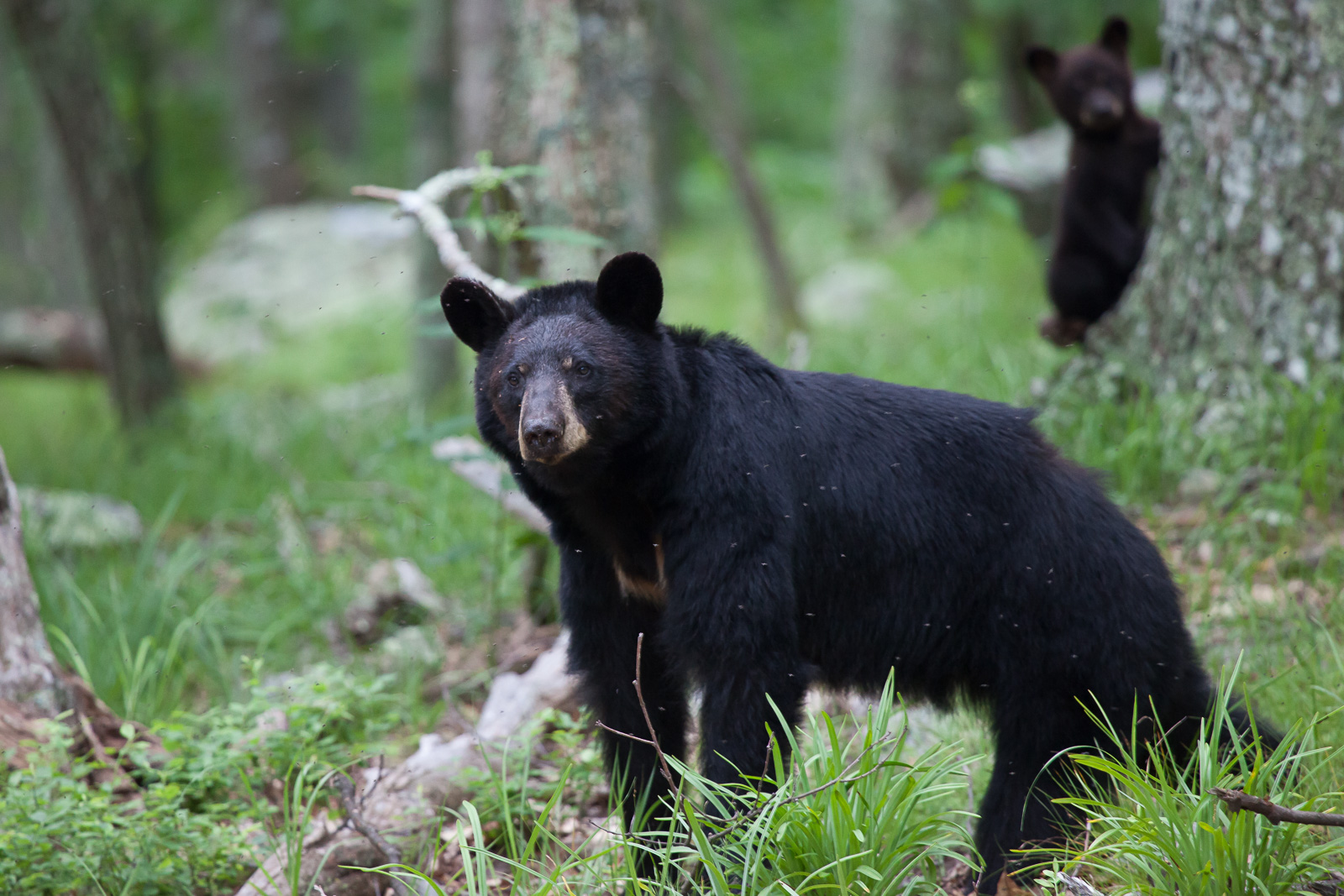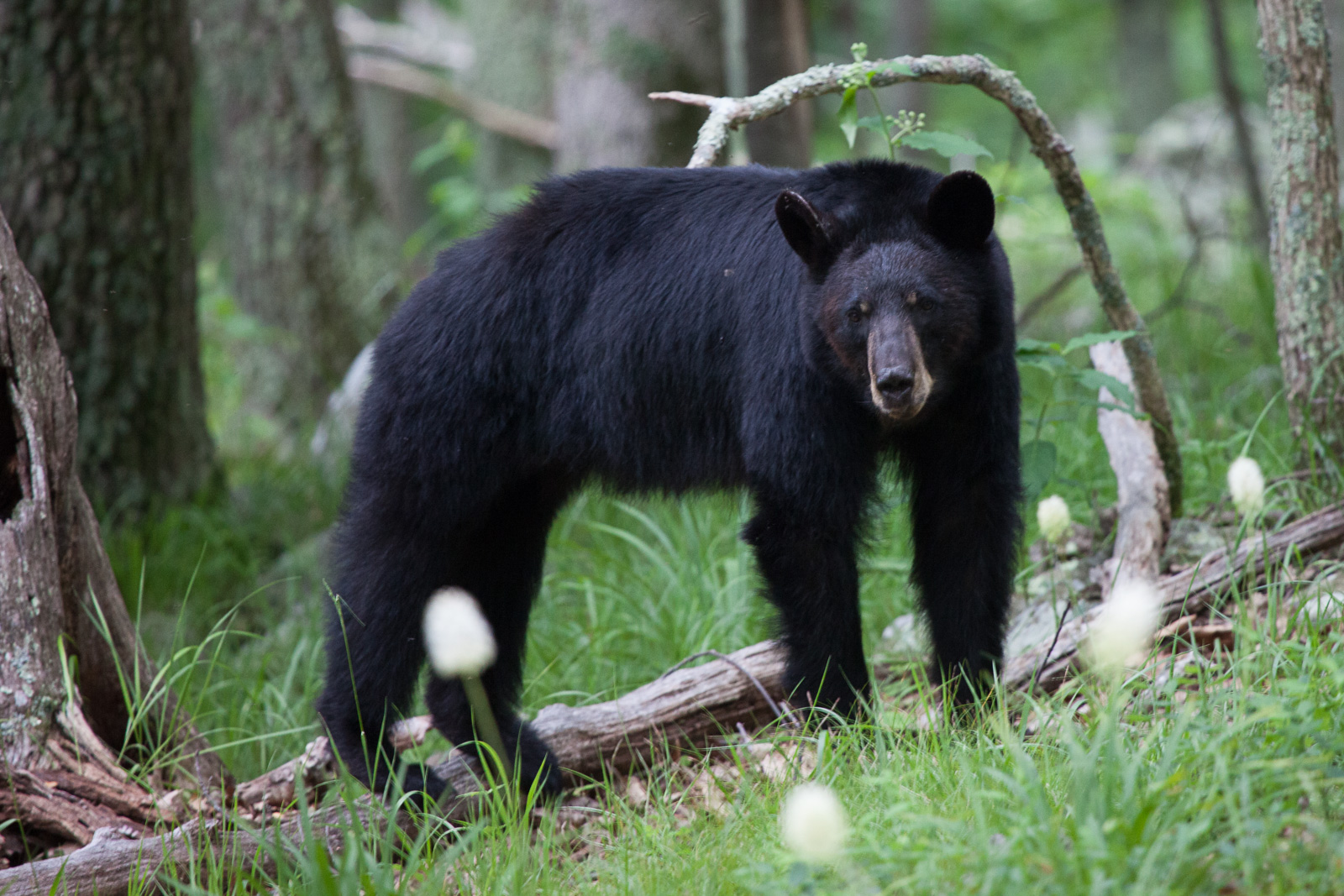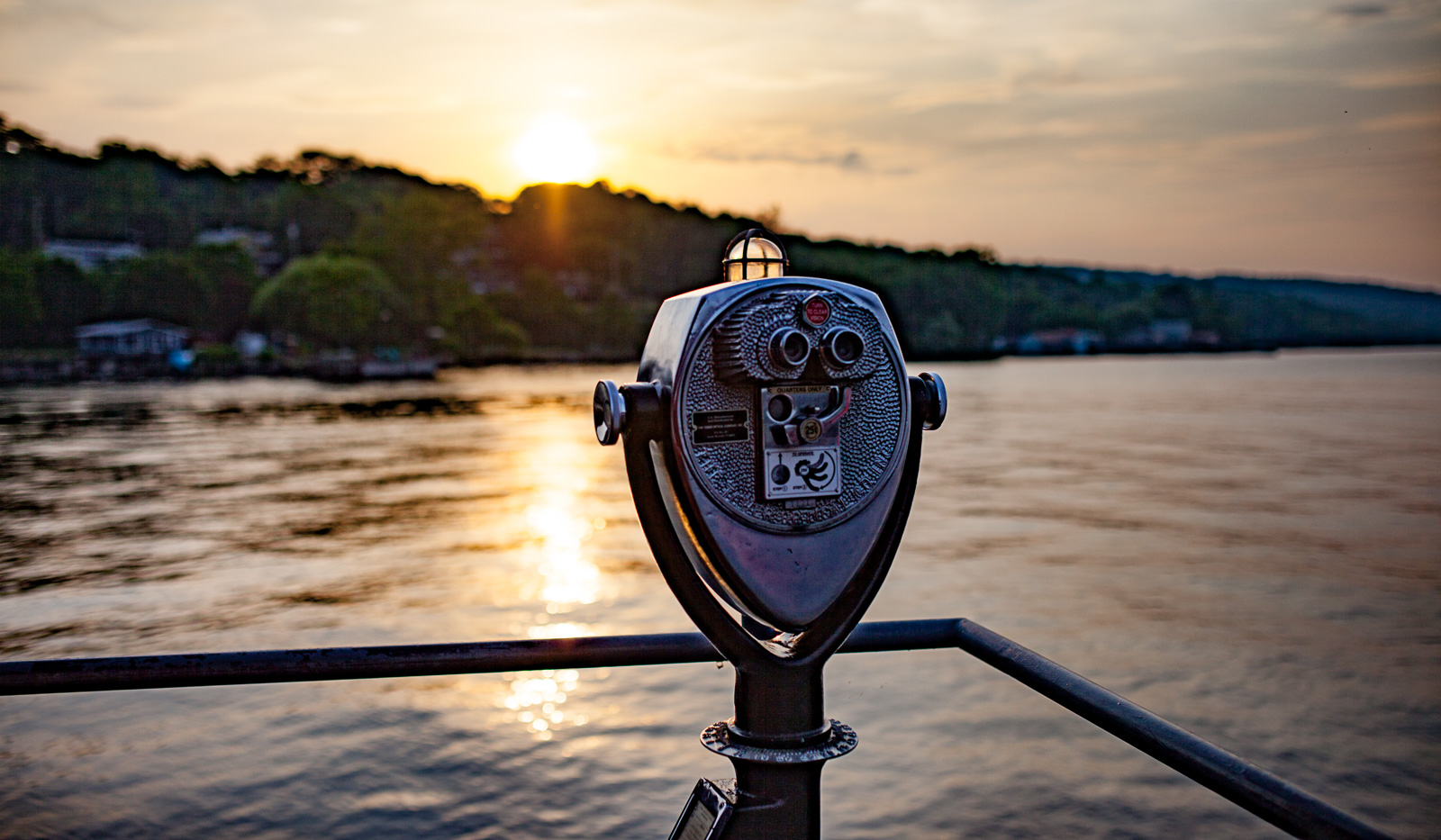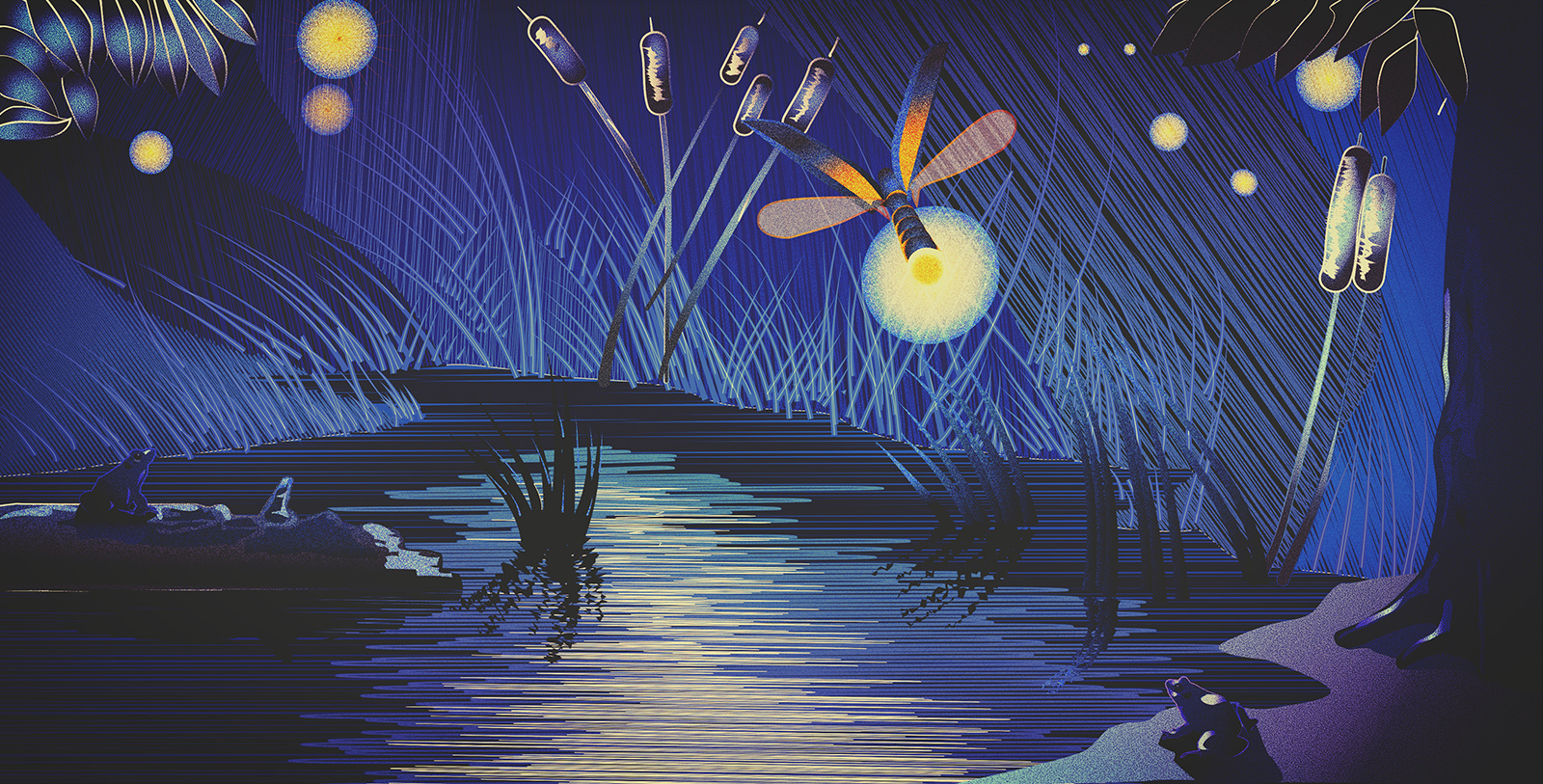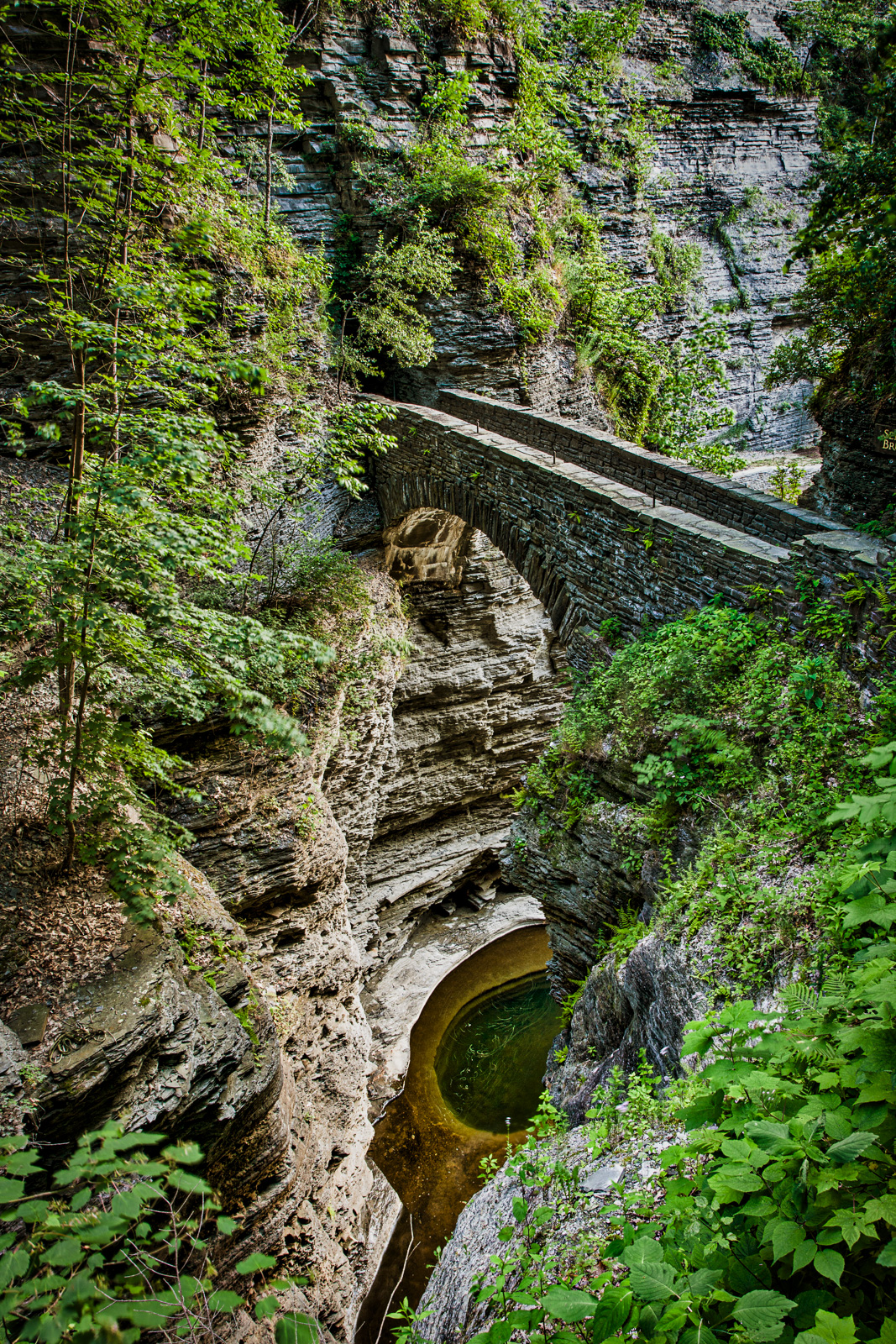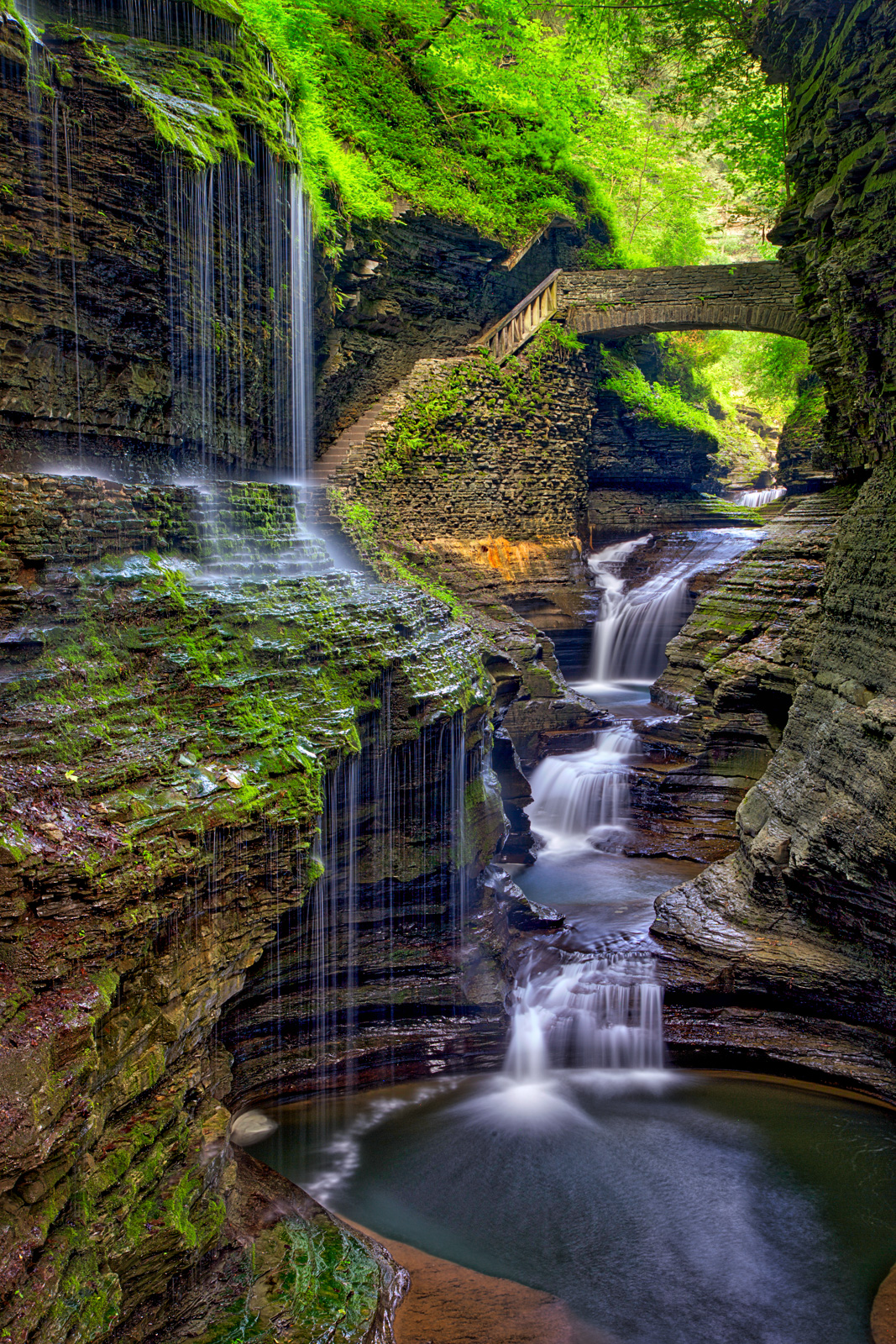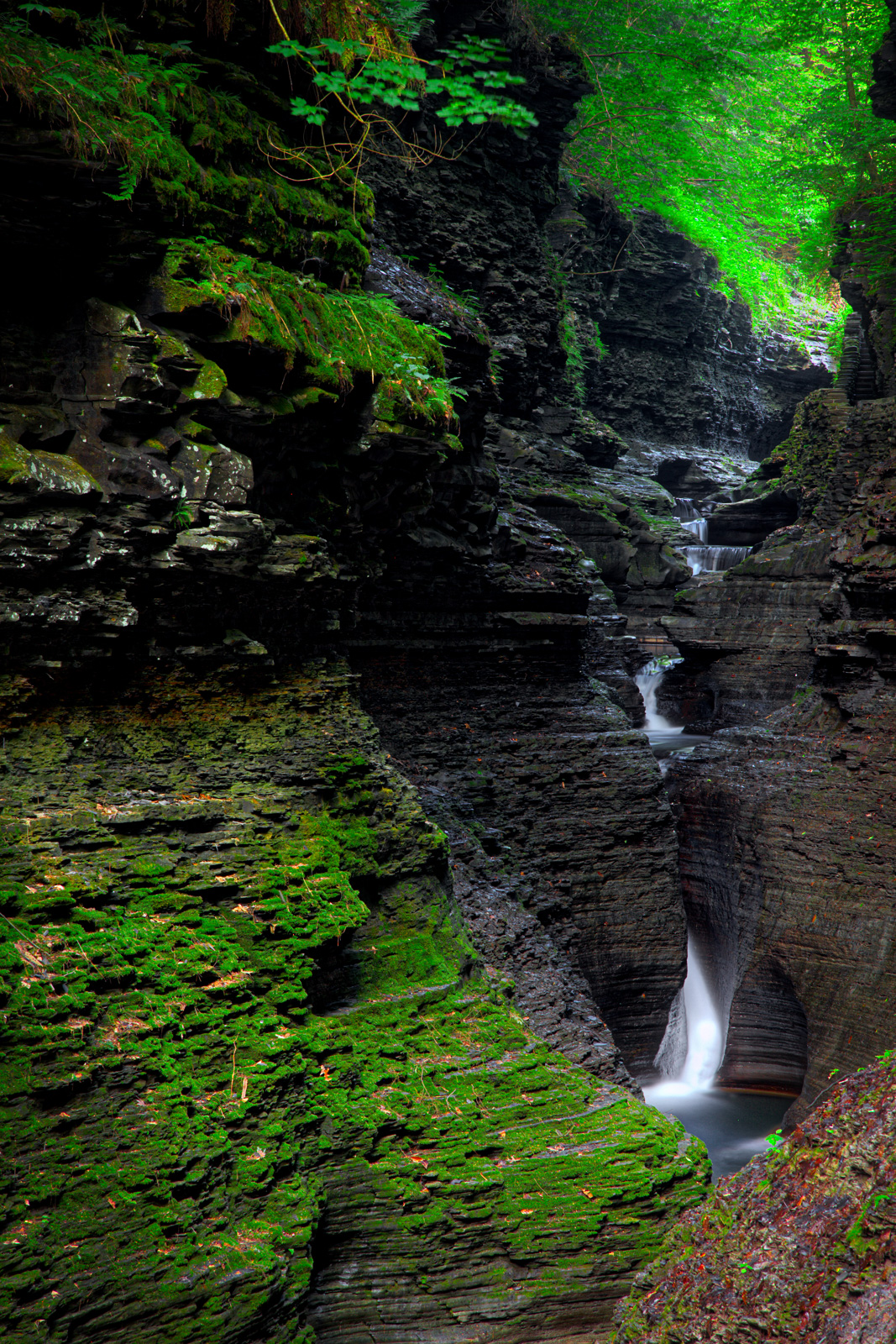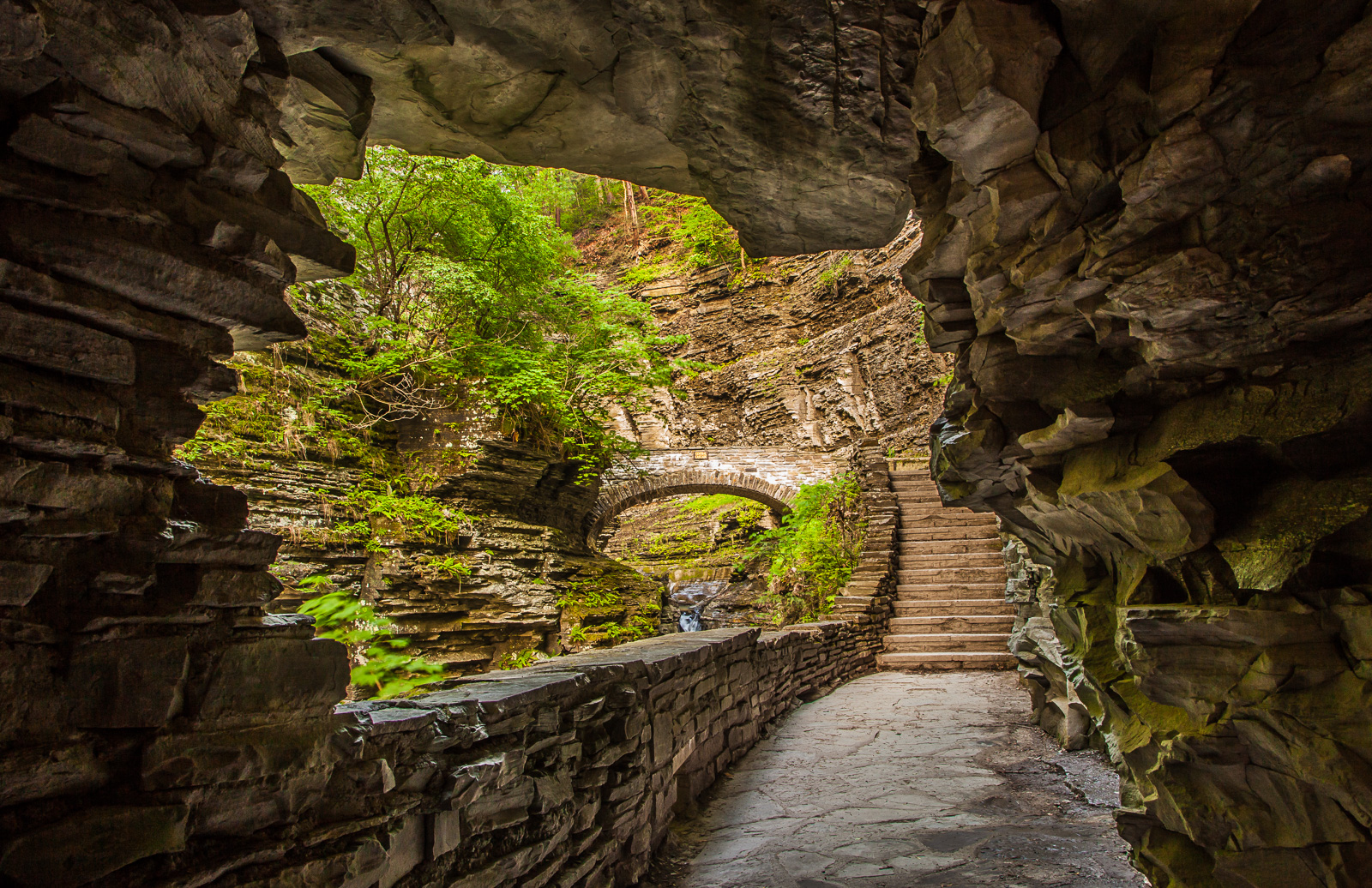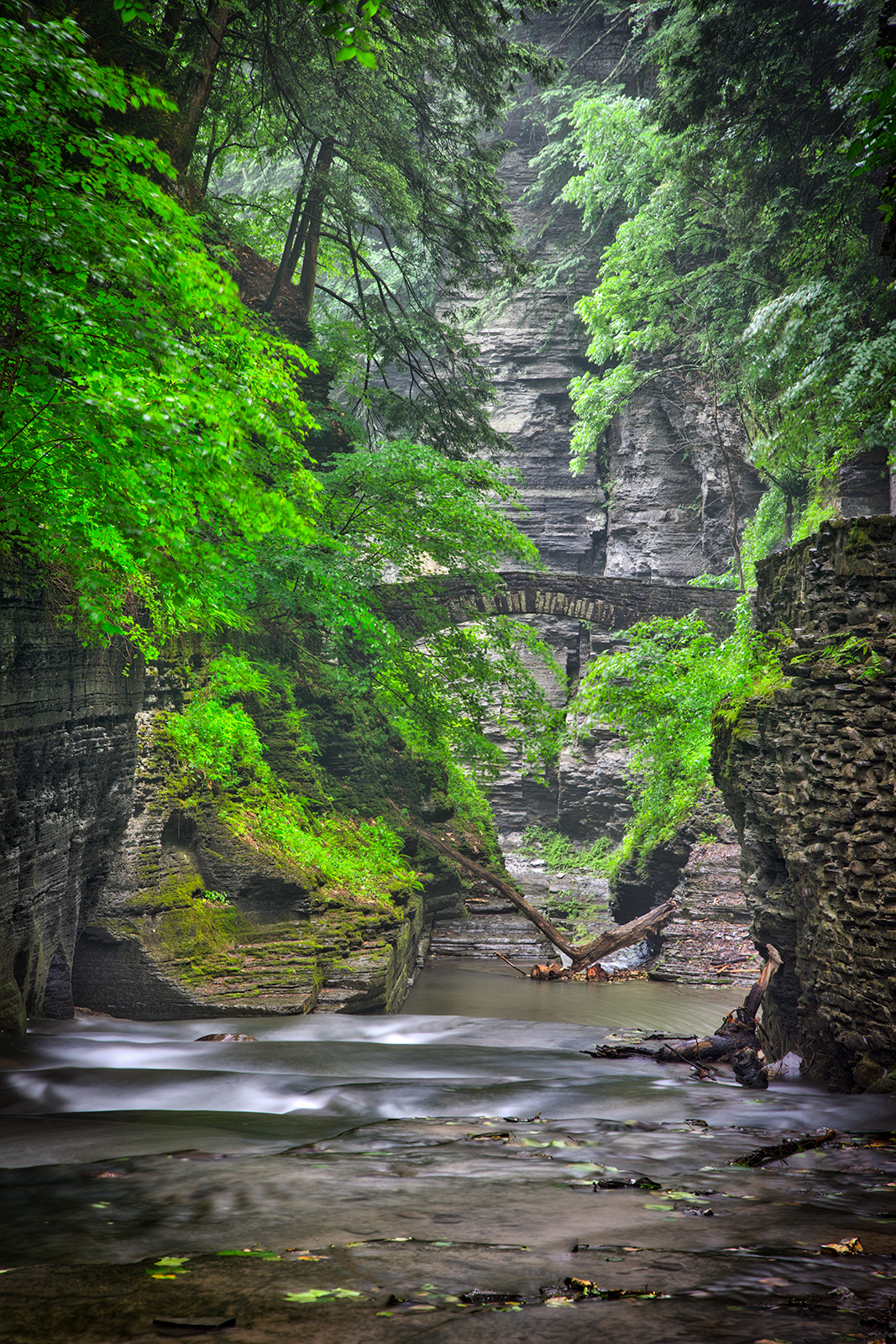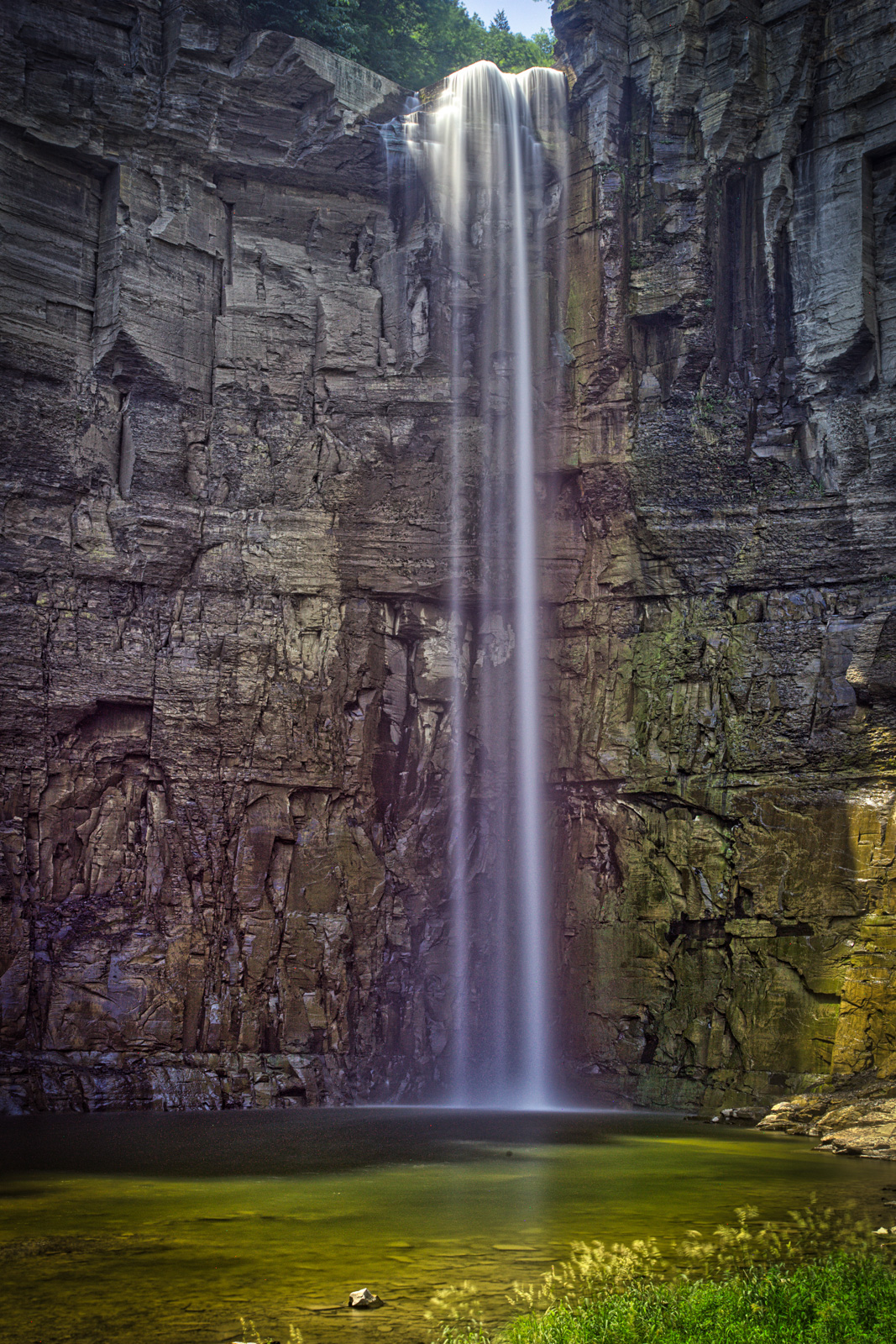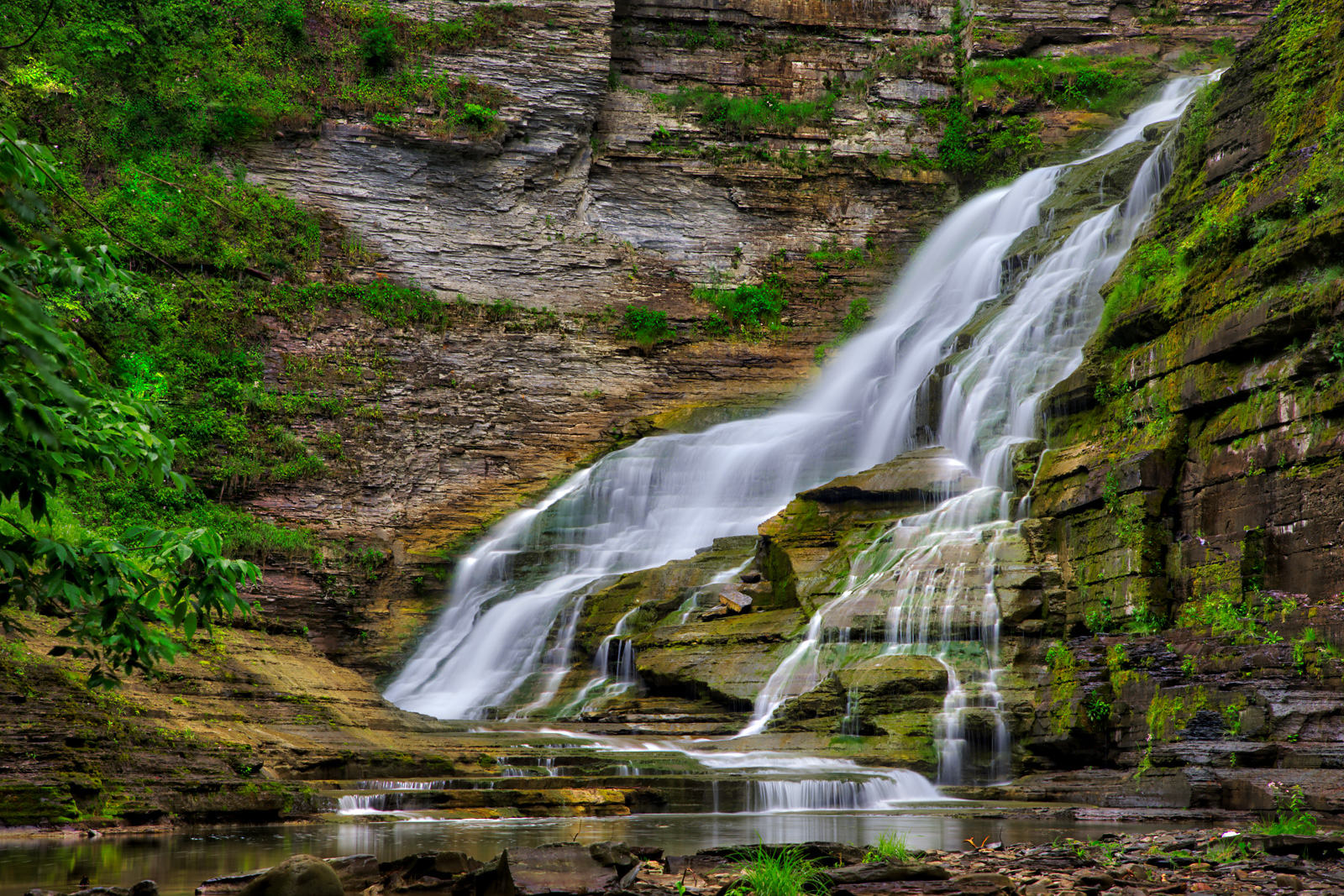

I looked up from my viewfinder. A small girl's sandals clicked softly on the stones of the trail as she ran. Her mahogany hair bounced behind her. She disappeared into the waterfall. I knew a tunnel waited behind the water, but her vanishing startled me anyway. Moments later, she stuck her head from behind the wet curtain, flashed a mischievous smile at her parents, and disappeared again, the sound of her footsteps lost in the din of the cascade.
I stood in the back of a Spencer’s surrounded by the off color merchandise generally aimed at a more adult audience. I was ten years old and I didn’t know what half the things around me were. Yet, there I stood, enthralled, not by any of the greeting cards, tacky lingerie, lava lamps, or black lights, but with a large display of posters that I thumbed through like the pages of an enormous book. I admit that I paused momentarily on some some of the posters of scantily clad women (I was a ten year old boy for pete’s sake!). It was the seventies, and many images were based on the revival of Tolkien’s Middle Earth. Alan Lee and John Howe painted places where architecture and geography seemed to flow into each other. Spires blended into mountains, paths were inseparable from cliffs. I knew it was fantastical. Places like that didn’t exist. I was standing in a corner of a square store, in a squat dark mall, made of functional boxes. This was American architecture.
I grew up on a diet of EB White and JRR Tolkien. CS Lewis and Terry Brooks. My childhood dreams were of waterfalls flowing out of grottos, and walkways of rock that blurred away when they fell into your peripheral vision. I imagined bridges that seemed to be natural arches, formed when the scouring force of water found a weak spot in the rock and bore a tunnel, leaving the area above it suspended. I knew I would never see anything in real life that would come close to Tolkien’s imagination, but looking at the Middle Earth paintings, they seemed like they could exist. The limitation wasn’t physics, but rather will. These amazing structures were silly things. Sure they could be made, but at an unreasonable cost of man hours and materials. I didn’t think of man hours in the fifth grade, but still I had a reasonably good idea of pragmatism. Storybook places were for storybooks.
In my late teens, I saw a pen and ink illustration of a deep canyon, carved through stratified stone. A perfect backlit stone arched bridge spans a plummeting drop that ends in a series of bowl like pools. The walls lining paths to the bridge were made of stacked stone to echo the stratified cliffs. Vegetation sprouted from the gaps in the mortar. My first impression was that it was another fantastic illustration from a vivid imagination, but then I saw a caption: “Watkins Glen, Finger Lakes Region, NY.” By this time, I had learned that there were places that tried to integrate architecture with the environment, and that my certainty of what defined American architecture had been misplaced. I was seventeen, NOW I knew the way things worked.
I assumed a certain amount of artistic license had been taken, an idealized version of a real place. Then I did some research and found some photos of Watkins Glen State Park, and I was dumbfounded. This was a State Park? What type of boondoggle was this? I’d been to State parks where rickety wooden platforms and staircases that needed to be replaced every few years were the norm. Unless there was a preexisting homestead taken over by the park, stonework of this scale was just too labor intensive and getting approval for funding would be a Sisyphean task.
Then, I saw the references to the Civilian Conservation Corps. The building of the paths and bridges corresponded with a time when unemployment in the US was over twenty-five percent. One of Franklin D. Roosevelt’s New Deal agencies, the CCC as it became known, was created to put young men to work and instill discipline by hiring them to work in natural conservation. The young men were put under the authority of the US Army so strict discipline could be enforced. Time and resources became less of an issue. With a military mindset and attention to detail, what had seemed impossible under contemporary standards made perfect sense.
I resolved to go to Watkins Glen one day, but one day was soon lost in the endless possibilities of an 18 year old mind. My interest turned toward more traditional ideas of human interactions with the natural world: hiking, backpacking, climbing, kayaking. I wanted the hand of man imperceptible in my wilderness experiences.
Twenty-five years later, I found myself staring at a map. It was summer and my wanderlust had reared its ugly head and I couldn’t concentrate. Work limited my ability to make a multi week trip out west as had become my habit, so I was scanning up and down the East Coast. I contemplated a journey down to the Everglades, but while craving adventure, the prospect of south Florida at the end of June had more potential to be a mosquito-ridden sufferfest than I was willing to risk. My finger traced lines north from home in North Carolina, staying inland to avoid the nightmare inducing drive on I-95 up the coast from Washington, DC. I followed I-81 north and, out of the corner of my eye, just to the left of the fat line of the interstate in NY, were a series of small lakes and at the southern end of one of these long thin lakes was a small patch of green indicating a park. Watkins Glen State Park. Maybe it was time.
My route meandered up the western side of the Appalachians and through Shenandoah National Park in Virginia, where I stopped for a couple of nights. As I’ve found in most National Parks, if you are willing to go more than three miles into the backcountry on a weekday you have a fair chance at solitude. This is what I was used to. I sat on top of rocky peaks with the Blue Ridge falling away beneath me as the sun placed its musical notes on the bars of the plateau ridge lines. A few miles into a hike I stumbled across a mother bear and two cubs. The cubs dutifully climbed the tree while mother watched me anxiously. I moved slowly past at an oblique angle. When I lingered too long taking a photo, A gentle but firm “Huff” from the mother let me know it was time to open up the distance. This was the type of interaction I was familiar having with nature. Being face to face with a bear was in my comfort zone, but being face to face with a vacationing family of four, kids yelling and brandishing selfie sticks like swords was enough to make me need a Xanax.
Rollover image for caption. Click or tap above caption to enlarge image.
I drove through Pennsylvania and into southern New York. The town of Watkins Glen created mixed feelings. It was a perfectly nice picturesque town overlooking a long lake with vineyards lining the banks. However the throngs of tourists there for the summer season, and the nearby NASCAR track didn’t leave me with a feeling of a Tolkien landscape. My ambivalence was reinforced when I went to the park entrance. Crowds of people were escaping the summer heat in the park’s Olympic sized swimming pool, a wedding was taking place at the pavilion, and the paths lining the gorge were filled. It felt more like a pilgrimage with offerings of dripping ice cream cones and empty gatorade bottles left at overflowing trashcans. I pictured the uninhabited postcard image of the park.
Watkins Glen was most assuredly NOT uninhabited, and the campground where I was staying in the park sat alarmingly close to railroad tracks. Periodic rhythmic rumblings of diesels and shrill whistles broke the sound of the crowd. After settling into my place at the massive campground, I sulked a bit. It was nearing dark and, suddenly I felt a need to get away from the barking dogs, kids riding bikes, and music coming from around campfires. I enjoyed camping with friends and swapping stories around a fire but my need to feel the solitude I had so naively presumed was here, mandated putting on a headlamp and walking one of the trails that circled the campground.
Mosquitos buzzed my ears as I walked the gentle trail; they almost overwhelmed the low din of conversation and laughter coming from the campground. At various points around the trail I would stop and turn off my headlamp and shut my eyes so they would adapt to the high overcast night. It also allowed me to listen for small animals that might be coming out for the evening. I did this several times along the path, even going so far as to leave the headlamp off and shuffle along slowly, primarily by feel, sensing more than seeing a clearing as I stepped out from a stand of trees. The buzzing of insects became overwhelmed by a chorus of green frogs, and in the dim light I could pick out the distinctive silhouettes of cattails.
The flickering light of fireflies appeared in my peripheral vision and slowly resolved to include the entire marsh I had stumbled upon. The light show continued as did the low banjo-like twanging of the frogs. I sat in the middle of the trail aware that I was making myself an easy target for biting insects, a tick check in the tent would be mandatory, but the sight and sound combined to provide an imprint of wild, something I desperately needed. Even if I was disappointed with the park in general I still had this moment. I returned to my campsite and turned in without making a fire, resolving to get up early and beat the crowd to the gorge the following morning.
Before dawn, I crawled out of my backpacking tent and walked down the campground road past the RV’s and massive car camping shelters big enough to stand up in. Tarps over picnic tables. The smell of the previous night’s barbecue and bonfires competed with the smell of the gasoline running the generators. The rumble of snoring came from sites where people slept off the previous night’s revelry. These campers were in their element. Their expectations were realistic while there was still something of the ten year old in me, hopelessly naive despite any deluded concept of world weariness. I left the road and descended the path that led to the gorge.
In the early morning mist, the gorge was transformed. I arrived and stood at the gate guarding the entrance to the path running along the cliffs. I opened it, walked though, and suddenly I was in a world where dwarves and elves would hardly seem out of place, but even more than that it was apparent that this was a place of grace. The forms all flow into one another. The waterfalls echo in the flow of pathways. Walking behind waterfalls causes light to scatter into walls of diamonds. Yes, it is graceful, but also it is an ode to grace. There is the fulfillment of a need that transcends the strict parameters of what was required. The park is graceful in concept, graceful in execution and in product. I was able to move freely through the gorge with no people “cluttering” up my photographs. The photos that were produced were very much a representation that the ten year old me would have stopped at and wondered. Then I realized the incongruity of my thinking. We want to picture our wilderness as untouched. This place was never meant to be that. It was meant to be a place where people belong. Stairs, paths, and bridges, regardless of aesthetics, are folly without people using them. In all the images I grew up with, I never remember seeing the fantastical structures with masses of people inhabiting them. There may have been a few people for scale, but never enough to feel crowded. We do the same with images of ancient civilizations - the Incas, Aztecs, Anasazi, We find ruins, and picture them in their prime, grand but sparsely inhabited.
I spent the next couple of days exploring some other parks in the area, Treman and Taughannock State Parks. Again I found sublime beauty, manmade and natural, absolutely packed with humanity. It rained the day I visited Treman and, as I had found so many times before, thunderstorms have a way of clearing the trail. I enjoyed the solitude while I watched as Lucifer Falls boomed it’s way down a stair stepping drop. The same sort of bridges that spanned the gorge at Watkins Glen spanned the gorge here. But somehow the stone trail seemed more lonely than pristine.
